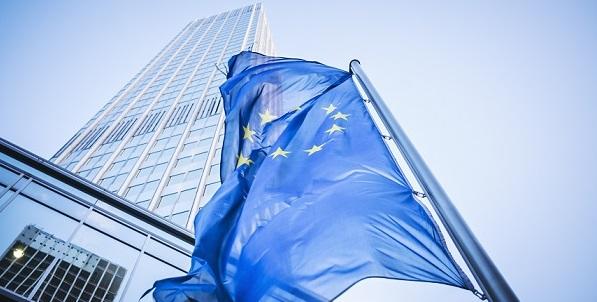
In March 2015 the ECB started a quantitative easing programme, an extreme monetary policy to expand the money supply, either by lowering interest rates or through open market operations.
It’s usually used when almost all of the measures to reactivate economy fail and central banks have to experiment other tools to encourage banks to pump money into the economy.
Following the QE programme, known unofficially as “Plan Draghi” in the Eurozone, the ECB has bought since March 2015 over 60 billion worth of assets each month. Basically the ECB is buying bonds issued by governments or public institutions in the eurozone (such as the European Investment Bank ) with a maturity between 2 and 30 years.
Supposedly, the programme is planned to finish in September of 2016 but this plan generates a lot of questions.
But, what is exactly Quantitative Easing?
 In practical terms, QE means that central banks create money out of nothing to buy securities, such as government bonds. This new money swells the size of bank reserves by the quantity of assets purchased and that’s why this programme is called Quantitative Easings. The money supply is intended to flood financial institutions with capital in an effort to stimulate lending and increase liquidity.
In practical terms, QE means that central banks create money out of nothing to buy securities, such as government bonds. This new money swells the size of bank reserves by the quantity of assets purchased and that’s why this programme is called Quantitative Easings. The money supply is intended to flood financial institutions with capital in an effort to stimulate lending and increase liquidity.
Much of the governments’ debt is held by banks in the Eurozone and the ECB wants them to give more credits. If the ECB buys government bonds, their prices rise and profitability drop even more. This is a liquidity-providing operation that weakens the value of the euro. This depreciation makes European exports cheaper and competitive, and ultimately, helps in recovering. In addition, as a result of the stimulus to internal and external consumption, the ECB combats the risk of deflation, a widespread and prolonged drop in prices, as well as the high unemployment.
Another QE's important aim is limiting investors appetite for government debt and promote that they divert their money to a more profitable investment in the production economy.
Information on these pages contains forward-looking statements that involve risks and uncertainties. Markets and instruments profiled on this page are for informational purposes only and should not in any way come across as a recommendation to buy or sell in these assets. You should do your own thorough research before making any investment decisions. FXStreet does not in any way guarantee that this information is free from mistakes, errors, or material misstatements. It also does not guarantee that this information is of a timely nature. Investing in Open Markets involves a great deal of risk, including the loss of all or a portion of your investment, as well as emotional distress. All risks, losses and costs associated with investing, including total loss of principal, are your responsibility. The views and opinions expressed in this article are those of the authors and do not necessarily reflect the official policy or position of FXStreet nor its advertisers. The author will not be held responsible for information that is found at the end of links posted on this page.
If not otherwise explicitly mentioned in the body of the article, at the time of writing, the author has no position in any stock mentioned in this article and no business relationship with any company mentioned. The author has not received compensation for writing this article, other than from FXStreet.
FXStreet and the author do not provide personalized recommendations. The author makes no representations as to the accuracy, completeness, or suitability of this information. FXStreet and the author will not be liable for any errors, omissions or any losses, injuries or damages arising from this information and its display or use. Errors and omissions excepted.
The author and FXStreet are not registered investment advisors and nothing in this article is intended to be investment advice.
Editors’ Picks

EUR/USD trims losses and approaches 1.0800 after US data
The US Dollar renewed its bullish momentum on Tuesday, pressuring EUR/USD and keeping the pair under the critical 1.0800 threshold following the release of US ISM Manufacturing PMI and JOLTS readings.

GBP/USD meets support around 1.2880, USD remains strong
After bottoming out around the 1.2880 region, GBP/USD now manages to attempt a bounce and flirt with the 1.2900 zone in the wake of weaker-than-expected US data releases.

Gold nears $3,100 as fears receded
Gold is easing from its fresh record high near $3,150 but remains well supported above the $3,100 mark. A generalised pullback in US yields is underpinning the yellow metal, as traders stay on the sidelines awaiting clarity on upcoming US tariff announcements.

Dogecoin bulls defend lifeline support as risk-off sentiment continues
Dogecoin trades at $0.1731 during early American hours on Tuesday after recovering from Monday’s support at $0.16. The leading meme coin faced negative headwinds early in the week as investors reacted to comments by Tesla CEO Elon Musk, who heads the special Department of Government Efficiency (D.O.G.E.) in the US.

Is the US economy headed for a recession?
Leading economists say a recession is more likely than originally expected. With new tariffs set to be launched on April 2, investors and economists are growing more concerned about an economic slowdown or recession.
RECOMMENDED LESSONS
Making money in forex is easy if you know how the bankers trade!
Discover how to make money in forex is easy if you know how the bankers trade!
5 Forex News Events You Need To Know
In the fast moving world of currency markets, it is extremely important for new traders to know the list of important forex news...
Top 10 Chart Patterns Every Trader Should Know
Chart patterns are one of the most effective trading tools for a trader. They are pure price-action, and form on the basis of underlying buying and...
7 Ways to Avoid Forex Scams
The forex industry is recently seeing more and more scams. Here are 7 ways to avoid losing your money in such scams: Forex scams are becoming frequent. Michael Greenberg reports on luxurious expenses, including a submarine bought from the money taken from forex traders. Here’s another report of a forex fraud. So, how can we avoid falling in such forex scams?
What Are the 10 Fatal Mistakes Traders Make
Trading is exciting. Trading is hard. Trading is extremely hard. Some say that it takes more than 10,000 hours to master. Others believe that trading is the way to quick riches. They might be both wrong. What is important to know that no matter how experienced you are, mistakes will be part of the trading process.

The Best brokers to trade EUR/USD
SPONSORED Discover the top brokers for trading EUR/USD in 2025. Our list features brokers with competitive spreads, fast execution, and powerful platforms. Whether you're a beginner or an expert, find the right partner to navigate the dynamic Forex market.
